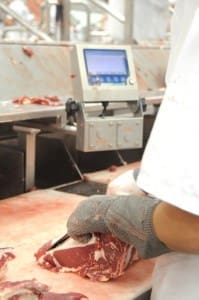PERIODS of high beef kill and poor seasons in the past have often raised speculation that slaughter cattle will become hard to find the following year, and rates of kills likely to decline – only to find that a ‘phantom herd’ of cattle emerges to fill the void.
 It perhaps best illustrates the Australian beef industry’s alarmingly poor forecasting ability when it comes to slaughter outlook.
It perhaps best illustrates the Australian beef industry’s alarmingly poor forecasting ability when it comes to slaughter outlook.
In northern Australia, at least, the best indications come from a series of discussions held late in the year involving MLA and major pastoral companies, from which MLA extrapolates forecasts for turnoff the following year.
But what’s patently obvious this year is that there just ain’t no ‘phantom herd’ out there that will ease the impact of deficits caused by earlier frenetic rates of slaughter.
The record money being pushed in front of cattle suppliers’ noses by Queensland processors this past month has had a negligible effect on recent rates of beef kill, and bookings being held by processors for coming weeks.
While SEQ grids remain largely unchanged this week, it’s worth re-visiting last week’s report briefly to refresh readers memories of what’s happened. Most export grids rose another 20c/kg the week before last, pushing heavy cows to 540-545c/kg, and heavy grassfed steer, four-teeth to 555-565c.
This time last year, four-tooth grassfed steer at the same plants was worth 385c, and best cow 360c – rises of 180c and 185c respectively.
While last week’s Eastern States beef kill reported by NLRS did rise 2pc on the week previous to 151,418 head, it’s worth remembering that current rates of slaughter have now dropped about 30,000 head, or close to 20pc, from where they sat just three or four months ago.
Year-on year, the decline seen in last week’s Eastern States kill was 12pc, or about 20,000 head.
Queensland’s tally last week, at below 78,000 head, is down 6pc year-on-year, while NSW, at 36,800, is back 10pc. Victoria was relatively worse, with last week’s kill at below 25,000 head being 21pc down on last year, and South Australia’s kill at 9016 head back 9pc on 2014 figures. The Tasmanian kill lacks relevance, with the figure of 2751 head being 41pc down, year-on-year, but that figure includes a week-long closure at JBS Longford, which is being repeated this week for annual maintenance.
Worth remembering is that Monday is a public holiday in the two largest processing states of Qld and NSW, which will put another big dent in next week’s eastern states kill figures.
Another factor that Beef Central has only just become aware of is a strategy employed in some export sheds earlier this year (where agreements allowed it), where gazetted public holidays (including days like Butchers Picnic holidays) which fell earlier in the year were ‘carried over’ til later in the calendar, to manage the huge kills required in the first half due to drought turnoff. Some of those holidays will in fact be observed between now and the end of the year, which will put a further dent in second-half throughput.
Has the market peaked?
“Supply is supply,” a senior processing livestock manager told Beef Central this morning during discussion. “The money currently on offer is not having any great impact on delivering more cattle,” he said.
With processors now showing big losses on grassfed ox and cow (see last week’s kill report), it begs the question: Has the market peaked, for the timebeing at least – especially as higher money does not seem to be pushing more cattle to market?
Certainly, it’s not hard to find views that under current circumstances in international meat markets (especially the US), cattle price has gotten too dear.
While it’s hard to see any real downside on cattle price going forward, equally, it is starting to look likely that recent advances are unlikely to continue, in the Queensland/northern NSW region at least.
Adding to that is some big slides in cattle prices and imported manufacturing beef rates reported in the US over the past ten days. That’s a topic for closer scrutiny on Beef Central later this week.
There’s still plenty of evidence of big Eastern Australian processing sites skipping days this past week, as cattle flow continues to tighten. JBS Dinmore – the nation’s biggest export processor, with daily throughput around 3300 – missed another Monday yesterday, as it did a fortnight ago, and that trend is becoming increasingly common.
There’s still not a lot of evidence of Queensland processors pushing south to bolster local cattle supply, however, and a modest rise in southern cattle prices in some southern selling centres this past week may further delay any prospect of that becoming more widespread.
What may change cattle flows, more than anything, could be rain. Any sort of widespread rain could see cattle virtually disappear, processing stakeholders suggest.
Three inches of rain in coming months across large parts of Queensland and northern NSW could be the next trigger-point in cattle price movements, especially if those plants currently on four-day weeks, conceivably go back to three-day weekly shifts, if numbers get short enough.
Beef exports reflect cattle supply situation
Beef export shipments are now reflecting the wind-back in slaughter performance. Exports in August showed the first clear signs of slowing down, and that trend is expected to gather pace in September and October. Volumes to the US market in August were just below 40,000t, down about 5000t from the previous month, but still 7pc higher than the previous year.
September shipments to the US look like being around 32,000t, down 31pc compared to a year ago. Total beef exports to all markets in August were 106,000t, 5.2pc lower than a year ago and the lowest monthly export volume since January (impacted by Christmas holiday plant closures).
Lower slaughter implies lower exports in the last four months of the year.



HAVE YOUR SAY